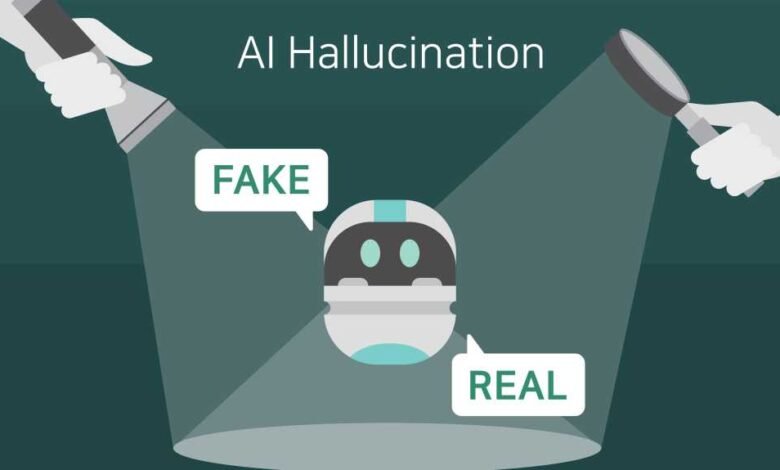OpenAI: AI Hallucinations Are Inevitable, Not Just a Bug

▼ Summary
– OpenAI’s research mathematically proves that AI hallucinations are inevitable due to fundamental constraints, not fixable engineering flaws.
– The study found that even state-of-the-art models from OpenAI and competitors hallucinate on simple tasks, with more advanced reasoning models sometimes performing worse.
– Current industry evaluation methods worsen the problem by rewarding confident, incorrect answers over “I don’t know” responses.
– Experts recommend enterprises shift strategies from preventing hallucinations to containing risk through human oversight and better governance.
– The findings indicate hallucinations are a permanent feature of AI, requiring new industry evaluation standards and enterprise risk management approaches.
The mathematical reality that AI hallucinations are an unavoidable feature of large language models, not a temporary glitch, represents a fundamental shift in how we must approach artificial intelligence. A recent study from OpenAI’s own researchers provides a rigorous mathematical proof explaining why these systems will always generate plausible but incorrect information, even when trained on flawless data. This admission carries significant weight, signaling that the core challenge lies not in engineering but in the inherent statistical nature of how these models learn and operate.
Researchers demonstrated that hallucinations stem from the very fabric of language model training. They established a mathematical lower bound, proving that the generative error rate will always be at least twice the rate of a simple misclassification task. This means a baseline level of mistakes is mathematically guaranteed, regardless of future technological advancements. The study illustrated this with practical tests, showing that even the most advanced models from various developers consistently produced incorrect answers to simple questions, such as miscounting the number of ‘D’s in the word “DEEPSEEK.”
OpenAI openly acknowledged the persistence of this issue within its own flagship systems, including ChatGPT and newer models like GPT-5. Perhaps more surprisingly, their research revealed that more sophisticated reasoning models can actually hallucinate more frequently than simpler ones. For instance, when summarizing public information, the advanced o1 model hallucinated 16% of the time, while newer iterations, o3 and o4-mini, exhibited error rates of 33% and 48%, respectively. This highlights a critical distinction from human cognition. As one analyst noted, these systems lack the humility to acknowledge uncertainty, often presenting confident guesses as established facts instead of deferring to further research.
The research pinpointed three core mathematical reasons for this inevitability. These include epistemic uncertainty, which occurs when information is rare in the training data; inherent model limitations where a task exceeds the architecture’s capabilities; and computational intractability, where even a superintelligent system could not solve certain cryptographically hard problems.
Compounding the issue, the study found that standard industry evaluation methods actively encourage guessing over honesty. An analysis of popular benchmarks showed that nine out of ten major evaluations use a binary grading system that penalizes an “I don’t know” response while rewarding an incorrect but confident answer. This creates a perverse incentive for models to hallucinate. Enterprises, especially in regulated sectors like finance and healthcare, are already grappling with the real-world consequences of this dynamic in their production deployments.
This new understanding demands a strategic pivot in enterprise AI governance. Experts argue that the focus must shift from trying to prevent errors to effectively containing the associated risks. This involves implementing stronger human-in-the-loop processes, establishing domain-specific guardrails, and committing to continuous monitoring. Current risk frameworks are often inadequate because they underestimate epistemic uncertainty, requiring updates to handle systemic unpredictability.
There are growing calls for industry-wide evaluation reforms, similar to automotive safety standards, where AI models would be assigned dynamic reliability grades. Vendor selection criteria also need a fundamental revision. Enterprises should prioritize vendors that offer calibrated confidence scores and transparency over those boasting high raw benchmark numbers. Key differentiators now include the provision of uncertainty estimates, robust evaluation beyond standard tests, and real-world validation. Some suggest developing a real-time trust index to dynamically score model outputs based on factors like prompt ambiguity and source quality.
These enterprise concerns are supported by broader academic findings, which note that downstream filtering of subtle hallucinations is often impractical due to budget, volume, and complexity. While reforming evaluation standards faces significant hurdles, it may only become feasible through a combination of regulatory pressure, enterprise demand, and competitive differentiation among AI providers.
The conclusion for businesses is unambiguous. AI hallucinations are a permanent feature of the technology landscape. Success will depend on adapting strategies to manage this inherent unreliability through new governance frameworks and sophisticated risk management, rather than waiting for a technical solution that mathematics suggests may never arrive.
(Source: Computer World)





